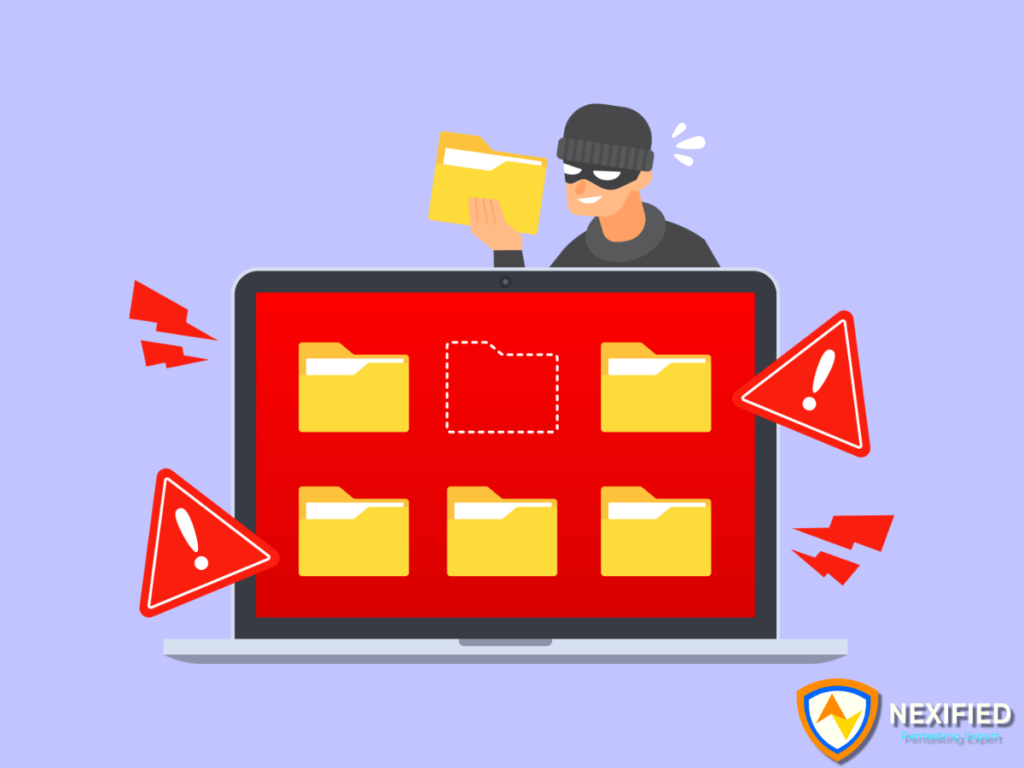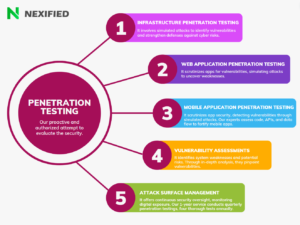In today’s digital-first landscape, the threat of a data breach is an ever-looming presence that businesses cannot afford to ignore. Effective cybersecurity strategies, including regular network anomaly scans and robust encryption protocols, are crucial in mitigating risks. Additionally, fostering an organizational culture where employees are vigilant and proactive about reporting unusual activities can serve as a front-line defense against data leaks, identity theft, and other cyber threats.

Understanding the signs of a data breach is vital for timely detection and response. This article delves into key indicators such as unusual network patterns, unexpected changes in user account behavior, and signs of phishing attempts. By equipping themselves with knowledge on ransomware, malware indicators, and developing a comprehensive cyber security incident response plan, businesses can enhance their resilience against these pervasive threats.
Recognizing Unusual Network Patterns
In the realm of cybersecurity, recognizing unusual network patterns is paramount for businesses to detect and mitigate potential data breaches effectively. Key indicators of such anomalies include:
- Unusual File and Network Activity:
- Abnormal access patterns and database activities
- Unexpected file changes, including unusual file extensions or locked files
- Pop-up messages demanding payment, signaling ransomware
- Strange file transfers or login attempts
- Performance and Traffic Anomalies:
- Slow computer performance or unexplained slow internet connections
- Intermittent network access
- Changes in traffic volume, including activity on unusual network ports
- Traffic with odd origins or targets, protocol violations, and unauthorized scans
To combat these threats, businesses should employ a comprehensive toolkit of network security measures:
- Network Security Tools: Utilize IDS (Intrusion Detection Systems), IPS (Intrusion Prevention Systems), DLP (Data Loss Prevention), SIEM (Security Information and Event Management), NBAD (Network Behavior Anomaly Detection), and SIA (Security Information Analytics).
- Monitoring and Detection: Regularly track and filter network traffic and events. Use network monitoring tools to analyze and identify suspicious patterns, employing vulnerability scanners, penetration testers, or ethical hackers to uncover gaps in network configuration, software, or hardware.
- Anomaly Detection Models: Implement models that dynamically derive a baseline for network activity, identifying actions that significantly deviate from this norm. This includes monitoring for signs of cyberattacks like phishing, malware, DoS/DDoS, MITM, SQL injection, and XSS.
By vigilantly monitoring for these signs and employing robust security tools, businesses can significantly reduce their vulnerability to cyber threats.
Unexpected Changes in User Account Behavior
Analyzing user activities is a crucial step in identifying potential data breaches. Key signs of compromise include:
- Unusual Login Attempts and Access Requests:
- Multiple failed login attempts
- Access requests to sensitive data without a clear need
- Password and Credential Changes:
- Unauthorized password resets or changes to user credentials
- Sudden account lockouts or changes in group memberships
Unexpected changes in user account behavior can often fly under the radar but are telling signs of a data breach. These anomalies may manifest as:
- Sudden Infrastructure Changes:
- Modifications to critical system passwords and accounts
- Loss of access to network, email, or social media accounts
- Administrative Troubles:
- Difficulties with administrative logins
- Problems accessing management functions
Lastly, account abuse and anomalous activity should raise immediate red flags:
- Account Abuse:
- Modified audit trails
- Sharing of account access
- Anomalous Activity:
- Logins at abnormal times or from unusual locations
- Discrepancies between user actions and their associated devices
Anomalies in File Access and Modification
In the cybersecurity landscape, anomalies in file access and modification stand as critical flags signaling a potential data breach. Recognizing these anomalies requires a vigilant approach to monitoring and protecting sensitive information:
- Early Signs of Compromise:
- Increase in phishing attempts leading to unauthorized access alerts.
- Virus protection alerts signaling the presence of malware.
- Scrambled filenames or contents, hinting at ransomware activity.
- Computers locking up or files suddenly becoming inaccessible.
- File Integrity Monitoring (FIM):
- Purpose: FIM serves as a proactive measure for detecting unauthorized changes in real-time, essential for maintaining data integrity and compliance with standards like PCI DSS.
- Functionality: It scrutinizes the integrity of files, registry keys, and folders, alerting administrators to alterations by comparing current versions against a known baseline.
- Unusual File Activities:
- Creation, modification, or deletion of files by unauthorized entities.
- Appearance of suspicious or unknown files, potentially malware.
- Sudden, unexplained changes in system files often made discreetly by hackers.
Understanding these indicators and employing robust monitoring tools like FIM can significantly bolster a business’s defenses against cyber threats, ensuring the integrity and security of critical data.
Signs of Phishing Attempts
Being cautious in digital communications is paramount as phishing attempts are a common precursor to data breaches. Phishing attacks come in various forms, each designed to extract sensitive information through deceptive means. Recognizing these attempts is crucial:
- Types of Phishing Attacks:
- Business Email Compromise (BEC): Targets companies directly through fraudulent emails.
- Credential Theft: Aims to steal login information.
- Malware: Involves malicious software designed to harm or exploit any programmable device or network.
- QR Code Phishing: Uses QR codes to direct victims to phishing sites.
- Ransomware: Holds data hostage in exchange for payment.
- Smishing and Vishing: Phishing conducted via SMS (Smishing) or voice calls (Vishing).
- Recognizing Phishing Emails: Key indicators include:
- Emails demanding urgent action.
- Inconsistencies in email addresses, links, and domain names.
- Requests for login credentials, payment information, or sensitive data.
- Spelling and grammar mistakes.
- Suspicious attachments.
To protect against these threats, employing services such as Phishing Security Awareness Training and Email Threat Detection & Response is advisable. Additionally, resources like the Global Intelligence Network and Phishing Intelligence Trends Review by Cofense offer valuable insights into combating phishing. Reporting suspicious emails to [email protected] and forwarding phishing text messages to SPAM (7726) are proactive steps in mitigating the impact of these attacks. Learn more about Phishing Attacks Here
Ransomware and Malware Indicators
Ransomware and malware are formidable threats in the cybersecurity landscape, with attackers employing sophisticated techniques to compromise business networks and data. Recognizing the indicators of such attacks is crucial for timely intervention and mitigation.
Ransomware and Malware Indicators:
- Early Detection Signs:
- Error messages or warnings from browsers and antivirus tools.
- Unusually high system, disk, or network activity.
- Unexpected software or system processes appearing.
- System or application crashes and alerts from malware protection solutions indicating they have been disabled.
- Abnormal browsing behavior, including pop-ups, redirects, or changes in browser configuration.
- Preventive Measures:
- User Training: Educate employees to identify and report phishing emails and suspicious activities.
- Software Vigilance: Keep all software up-to-date and employ strong passwords alongside multi-factor authentication.
- Backup and Recovery: Maintain offline, encrypted backups of critical data and ensure the ability to recover data efficiently.
- Holistic Security Solutions: Utilize comprehensive protection tools like Cynet 360 for a multi-layered defense approach.
- Response Strategies:
- Immediate disconnection from the IT network upon detecting ransomware.
- Activation of the security incident response plan.
- Regular review of network alerts, installing firewalls, and conducting risk assessments.
Implementing these strategies can significantly enhance an organization’s resilience against ransomware and malware threats, safeguarding critical consumer data and mitigating financial and reputational damages.
Response Strategy After Detecting a Breach
Upon detecting a data breach, swift and strategic actions are paramount to mitigate the impact and secure your business’s digital infrastructure. Here’s a structured approach to formulating an effective response strategy:
- Immediate Actions:
- Determine Data Exposure: Ascertain the extent of data compromise, including both your data and your users’.
- Stop Additional Data Loss: Secure systems, fix vulnerabilities, and secure physical areas related to the breach.
- Mobilize Breach Response Team: Assemble experts for a comprehensive response, including a data forensics team and legal counsel.
- Investigation and Mitigation:
- Analyze User Activity: Examine outbound connections to identify suspicious network activity.
- Mitigate Vulnerabilities: Employ Anomaly Detection solutions and tools like Sotero and InsightIDR for real-time abnormal usage alerts and data exfiltration alerts.
- Preserve Evidence: Document the investigation thoroughly without altering suspected systems.
- Notification and Recovery:
- Notify Affected Parties: Adhere to state laws and consider the nature of the compromise for notification.
- Offer Support: Provide at least a year of free credit monitoring or identity theft protection services.
- Engage with Law Enforcement: Consult on what information to include in breach notices to avoid hindering investigations.
This structured response strategy emphasizes the importance of immediate action, thorough investigation, and responsible notification to effectively manage a data breach.
Conclusion
Through this exploration of data breach indicators and preventive strategies, it’s evident that awareness and proactive measures are fundamental to safeguarding a business’s digital realm. Recognizing unusual network patterns, monitoring for unexpected changes in user behavior, and identifying anomalies in file access are critical steps in early detection. These practices, alongside employee education on phishing attempts and the implementation of robust response strategies, form the bedrock of effective cybersecurity defenses, reinforcing the need for businesses to be ever vigilant against the constantly evolving landscape of cyber threats.
As we consider the breadth of challenges businesses face in securing their data, it becomes apparent that collaboration with cybersecurity experts can provide an additional layer of protection. For those seeking to further secure their digital infrastructure, consider enhancing your defense mechanisms through professional vulnerability assessments. Contact us for PenTesting Services to bolster your cybersecurity stance. By taking decisive action and employing comprehensive security measures, businesses can significantly mitigate the risk of data breaches, ensuring the safety and trust of their customers and stakeholders in this digital age.
FAQs
What Actions Do Businesses Take Following a Data Breach?
Following a data breach, businesses undertake several critical steps to mitigate the damage and prevent future incidents. These steps include verifying whether protective measures like encryption were active during the breach, examining backup or preserved data for integrity, reviewing access logs to identify who had access to the compromised data at the time of the breach, and evaluating current access permissions to ensure they are necessary, restricting access where it is not.
What Steps Should I Take If My Personal Data Has Been Compromised?
If you discover that your personal data has been compromised, it’s crucial to act swiftly to protect yourself. Here are seven recommended steps:
- Immediately change your passwords.
- Enable two-factor authentication for an added layer of security.
- Stay informed about any updates or advisories from the affected company.
- Monitor your financial accounts and check your credit reports for any unusual activity.
- Consider enrolling in identity theft protection services.
- Place a freeze on your credit to prevent unauthorized access.
- Report the incident at IdentityTheft.gov for further assistance and guidance.
Are Companies Obligated to Inform You of a Data Breach?
Yes, companies are required to notify individuals directly without undue delay if a data breach is likely to result in a high risk to their rights and freedoms. The term ‘high risk’ indicates that the threshold for informing individuals is more significant than the requirement for notifying regulatory bodies such as the Information Commissioner’s Office (ICO).
How Can You Detect a Data Breach?
Identifying a data breach involves being vigilant for certain red flags that may indicate unauthorized access to your personal information. Key signs include being unable to log into your accounts, noticing unauthorized changes to your security settings, and seeing messages or notifications that you don’t recognize as actions you’ve taken.

